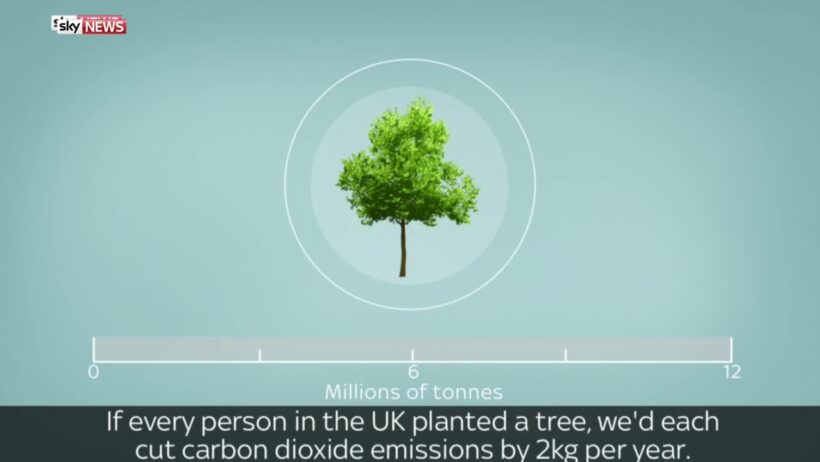How can we, as stewards of the Earth, efficiently wield nature’s inherent capacities to combat one of the most pressing issues of our time: global warming? Amidst the cacophony of environmental solutions, perennials emerge as nature’s unassuming yet formidable allies in the fight against climate change, altering the very fabric of our ecosystems. These plants, which return year after year without needing replanting, embody resilience and sustainability. But how exactly do they play a role in mitigating global warming? Let us traverse the intricate link between perennial plants and climate regulation, while appreciating their steadfast contributions to our planet’s health.
At the onset, it is crucial to address what perennials are and how they differ from annuals. Perennials complete their life cycle over several years, establishing extensive root systems that not only anchor them in place but also enhance soil stability. Unlike their annual counterparts, which require replanting each season, perennials conserve energy and resources, allowing for a more sustainable model of cultivation. This adaptability leads to an expansive range of habitats and ecosystems where they thrive, infiltrating spaces from pristine forests to manicured gardens.
One of the most significant contributions of perennials to climate management lies in their ability to sequester carbon dioxide. Through the process of photosynthesis, they absorb CO2 from the atmosphere, transforming it into biomass—roots, stems, and leaves. With a healthy population of perennials, carbon captured in the soil can increase dramatically, presenting a natural method for reducing greenhouse gas concentrations. To put it simply, each perennial standing in your garden or local park is a diligent worker in the battle against global warming, capturing carbon and contributing to the carbon cycle.
But can we truly quantify the impact of these green warriors? Recent studies indicate that well-maintained perennial systems can sequester 20-40% more carbon than annual systems. This marked increase is attested by the robustness of their root systems, which play a dual role; they not only harbor stored carbon but also improve soil quality by promoting microbial activity. This symbiotic relationship between plants and soil organisms fosters a thriving ecosystem that, in turn, supports the continued health of perennials, creating a self-sustaining cycle.
Furthermore, perennials wield the power of resilience against soil erosion, a phenomenon exacerbated by climate change. With their deep-root networks, these plants stabilize the soil, preventing loss during heavy rains or windstorms. In regions susceptible to flooding or drought, perennials can serve as a natural barrier, reducing runoff and water loss. They act as guardians, maintaining habitat integrity and ensuring that the soil retains its vitality for future plant generations. This fortification is critical, as healthier soil not only supports environmental balance but also bolsters agricultural productivity.
In addition to their ecological functions, perennials also impact local microclimates. By providing cover and shading, they reduce surface temperatures in their vicinity. This phenomenon can be pivotal in urban areas, where heat islands—regions significantly warmer than their rural surroundings—result directly from rampant urbanization. By integrating perennial gardens or green roofs into urban landscapes, we can mitigate heat effects considerably while enhancing local biodiversity. In this light, perennials are not just aesthetic enhancements; they are indispensable allies in the fight for cooler, more livable cities.
Despite understanding these benefits, a playful challenge emerges when we contemplate: how do we encourage more widespread use of perennials in our landscapes? It begins with education and awareness. Many gardeners and landowners are still unaware of the ecological advantages of incorporating perennials into their spaces. Workshops, community gardens, and educational campaigns can illuminate the profound effects these plants have on our environment. The more people recognize their importance, the more likely they are to cultivate them in their own backyards, creating a ripple effect across communities.
The diversity of perennial plants offers another compelling layer to their environmental impact. Notably, they can be categorized into edible and ornamental types, making them versatile for both culinary and aesthetic pursuits. Edible perennials, such as asparagus, rhubarb, and various berry bushes, provide nutritional benefits while combating climate change. Meanwhile, ornamental perennials—like coneflowers, daylilies, and hostas—can beautify landscapes while increasing biodiversity and attracting pollinators. As such, they serve dual purposes, providing pathways to both environmental sustainability and community bonding.
Moreover, integrating perennials into agricultural practices introduces an exciting frontier known as agroecology. By pairing perennials with traditional annual crops, farmers can create more resilient systems that yield diverse produce while simultaneously nurturing the soil. These mixed systems not only increase food security but also enhance ecological stability against pests and diseases. This innovative approach to farming can drastically reduce reliance on synthetic fertilizers and pesticides, further alleviating corporate-induced environmental strains.
Lastly, let us not overlook the broader implications of supporting perennial planting initiatives. Each plant contributed to our landscapes embodies a commitment to stewardship, emphasizing our role in nurturing the planet’s biodiversity. As we plant perennials, we invest in a greener, more sustainable future, embroiling ourselves in a collective responsibility to reverse the trajectory of climate change. Therefore, the question arises: are we ready to embrace perennials as our partners in environmental conservation and climate action? The answer must be a resounding yes, for by doing so, we can equip ourselves with nature’s evergreen climate warriors.
In conclusion, perennials offer not only environmental benefits but also serve as a reminder of our interconnectedness with nature. Their ability to sequester carbon, enhance soil health, and create cooler environments speaks volumes to their significance in the fight against global warming. We must take action now, utilizing these steadfast allies to cultivate a resilient planet for generations to come. Embrace the challenge: plant a perennial today, and support a sustainable tomorrow.








